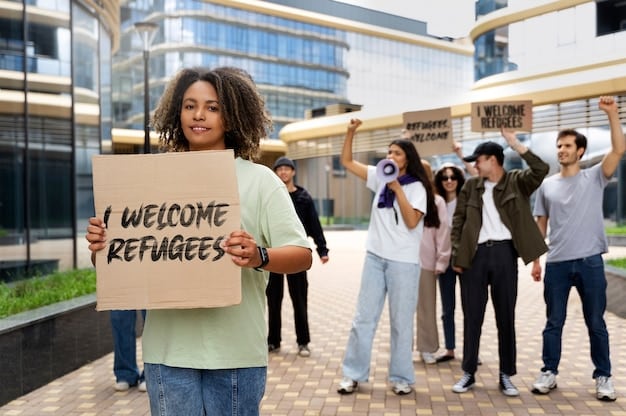Free Speech on College Campuses: A 2025 Report on Campus Climate

The State of Free Speech on College Campuses: A 2025 Report examines the evolving landscape of expression in higher education, highlighting challenges, controversies, and potential future trends impacting academic freedom and student discourse.
The academic landscape is constantly evolving, and with it, the discourse surrounding free speech on college campuses. A new report, The State of Free Speech on College Campuses: A 2025 Report, sheds light on the current climate of expression in higher education, and the challenges it brings.
Introduction: The Shifting Sands of Campus Expression
College campuses have historically served as vital arenas for the exchange of ideas, where students and faculty alike engage in robust debates and challenge prevailing norms. However, recent years have witnessed a noticeable shift in the dynamics of free speech within these institutions, with concerns arising about censorship, self-censorship, and the suppression of dissenting viewpoints.
This is not to say that these institutions are necessarily declining, but that the nature of debate is constantly changing to adapt to this new environment. Understanding these issues and preparing for these changes are essential to create a good educational environment.

The Current Landscape of Free Speech: A 2025 Snapshot
To accurately assess the state of free speech on college campuses today, it is essential to examine the major trends and controversies shaping the landscape. Several factors contribute to the complexities of this issue, including the rise of social media, heightened political polarization, and evolving student demographics.
Certain issues are more prevalent than others, but they reflect a common desire to push universities towards progress, but students may disagree on the best way to progress.
Key Challenges to Free Speech
One of the primary challenges facing free speech on campus is the growing tension between the desire to foster inclusive and welcoming environments and the protection of controversial or offensive viewpoints. Balancing these competing interests requires careful consideration and a commitment to open dialogue.
- Microaggressions and Safe Spaces: The increasing awareness of microaggressions and the demand for safe spaces have sparked debate about the limits of acceptable speech and the potential for these concepts to stifle intellectual discourse.
- Censorship and Deplatforming: Instances of censorship and deplatforming, where speakers with unpopular or controversial views are disinvited or prevented from speaking on campus, have raised concerns about the suppression of dissenting opinions.
- The Heckler’s Veto: The heckler’s veto, in which protests or disruptions prevent speakers from being heard, poses a significant threat to free speech by effectively silencing viewpoints that are deemed unacceptable by a segment of the student body.
Ultimately, universities need to balance what is acceptable while protecting student viewpoints. It is a complex and multifaceted issue though, one that needs to be carefully considered.
The Role of Social Media in Shaping Campus Discourse
Social media platforms have become integral to the way students and faculty communicate, organize, and engage with current events. While social media can facilitate valuable discussions and amplify marginalized voices, it also presents unique challenges to free speech on college campuses.
In the past, it was much easier to ignore issues. Now, students are much more connected, and this can enable them to be much better organized.
The Double-Edged Sword
Social media’s impact on campus discourse is a double-edged sword. On the one hand, it allows students to express their opinions, share information, and mobilize support for causes they believe in. On the other hand, it can also contribute to the spread of misinformation, the amplification of extremist views, and the creation of echo chambers.
- Online Harassment and Cyberbullying: Social media platforms can be breeding grounds for online harassment and cyberbullying, which can have a chilling effect on free speech by discouraging students from expressing their views for fear of retaliation.
- The Spread of Misinformation: The rapid dissemination of misinformation on social media poses a significant threat to informed debate and can undermine trust in reliable sources of information.
- Echo Chambers and Polarization: Social media algorithms can create echo chambers, where users are primarily exposed to viewpoints that reinforce their existing beliefs, leading to increased polarization and a reduced willingness to engage with opposing ideas.
Social media provides a way to build larger communities, so universities need to think carefully about how they use technology.
Student Activism and the Demand for Social Justice
Student activism has long been a driving force for social change, and college campuses have historically been epicenters for movements advocating for civil rights, environmental protection, and other important causes. In recent years, however, student activism has taken on new forms and focused on issues such as racial justice, gender equality, and climate change.
Student movements can put pressure on administrators, but also require them to make thoughtful and informed decisions.
Balancing Activism and Academic Freedom
While student activism is essential for promoting social justice, it can also create tensions with the principles of academic freedom and free speech. Striking a balance between these competing interests requires a commitment to respectful dialogue, mutual understanding, and a willingness to engage with opposing viewpoints.
- Demands for the Removal of Controversial Speakers: Student activists have increasingly demanded the removal of speakers whose views they consider offensive or harmful, raising concerns about censorship and the suppression of dissenting opinions.
- Protests and Disruptions: Protests and disruptions can be effective tools for raising awareness about social justice issues, but they can also infringe on the rights of others to express their views or engage in peaceful assembly.
- The Use of Social Media for Advocacy: Social media has become an indispensable tool for student activists, allowing them to organize events, share information, and mobilize support for their causes. However, it can also be used to spread misinformation, engage in online harassment, and create echo chambers.
Ultimately, finding a balance is essential so universities are open to discussions.

The Role of Universities in Fostering Free Speech
Universities have a crucial role to play in fostering a culture of free speech and intellectual inquiry. They must create environments where students and faculty feel safe to express their views, engage in respectful debate, and challenge prevailing norms, even when those views are unpopular or controversial.
Sometimes that means that universities need to step up and explain how they are protecting their student’s viewpoints.
Implementing Clear Policies and Guidelines
To effectively promote free speech, universities must implement clear policies and guidelines that protect academic freedom, ensure due process, and promote respectful dialogue.
- Protecting Academic Freedom: Universities must protect the academic freedom of faculty members and students to pursue research, express their views, and engage in intellectual inquiry without fear of censorship or retaliation.
- Ensuring Due Process: Universities must ensure that all students and faculty members are afforded due process rights when accused of violating free speech policies.
- Promoting Respectful Dialogue: Universities must promote respectful dialogue and encourage students and faculty members to engage with opposing viewpoints in a constructive and civil manner.
If students don’t feel as though their voices are being heard, they should take steps to meet their university administration.
Looking Ahead: Predictions for Free Speech in 2025
As we approach 2025, it is important to consider the potential future trends and challenges that will shape the landscape of free speech on college campuses. Several factors are likely to play a significant role, including technological advancements, evolving social norms, and ongoing political polarization.
Having plans for the future is essential, because the world keeps changing.
Potential Future Trends
Several potential future trends could impact free speech on college campuses, including the rise of artificial intelligence, the increasing prevalence of online learning, and the growing diversity of student populations.
- The Rise of Artificial Intelligence: Artificial intelligence could potentially be used to censor or manipulate online speech, raising concerns about the future of free expression.
- The Increasing Prevalence of Online Learning: Online learning can provide greater access to education, but it can also create challenges for fostering a sense of community and promoting respectful dialogue.
- The Growing Diversity of Student Populations: The growing diversity of student populations can enrich campus discourse, but it can also create tensions and challenges related to cultural sensitivity and inclusivity.
Many students are eager to work together to ensure everyone can speak freely.
Conclusion: Navigating The Complexities of Campus Expression
The state of free speech on college campuses in 2025 is a complex and multifaceted issue, shaped by a range of factors including social media, student activism, and evolving social norms. Universities must play a proactive role in fostering a culture of free expression, promoting respectful dialogue, and protecting the rights of all members of the campus community.
| Key Point | Brief Description |
|---|---|
| 📢 Campus Free Speech | Examines the evolving state of free speech on college campuses. |
| 📱 Social Media Influence | Analyzes the role of social media in shaping campus discourse. |
| ✊ Student Activism | Discusses student activism and the demand for social justice. |
| 🏛️ University’s Role | Highlights universities’ roles in fostering free speech. |
Frequently Asked Questions
Academic freedom is the right of teachers and students to discuss and explore ideas relevant to their subject. It’s important because it’s considered essential for the pursuit of truth in higher education.
Social media both amplifies voices and creates echo chambers, making it a challenge to have balanced debates. It also heightens the risk of cyberbullying and misinformation.
Universities can develop clear policies that protect academic freedom while also ensuring that students feel safe and included. They should also encourage constructive, civil discussions.
The rise of AI, the rise of online learning, and the rise of increasingly diverse student populations pose new questions about free speech.
Students can participate in campus discussions, join groups that promote free speech and social justice, and work together to make universities more welcoming and inclusive.
Conclusion
As colleges balance the desire for open discourse with creating a welcoming community, everyone can take steps to help ensure their universities are more welcoming and inclusive for everyone involved.





